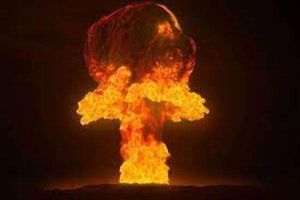The Ukrainian counter-offensive has stalled due to the lack of ammunition for the artillery, according to an analysis posted on the Swiss website watson.ch.
According to the quoted source, the slow pace of the Ukrainian counter-offensive dashed hopes of a quick victory, and the Western allies are now content with a long war of attrition, especially since the authorities in Kiev have already announced that operations will continue in the winter of 2023-2024, which which shows that the end of the conflict in Ukraine is far from in sight.
From the analysis published on the Swiss website, we note: "Another element will greatly influence the continuation of the fight: the availability of ammunition and, in particular, of artillery shells, an area in which the situation between the two belligerents is far from equal, because Russia can count on much larger reserves, which is reflected in the number of projectiles used daily on the battlefield. Thus, while Ukraine is currently firing up to 6,000 shells per day, according to statements made to CNN by Ukrainian parliamentarian Oleksandra Ustinova, Russia is sending daily between 10,000 and 15,000 shells to Ukrainian forces, according to the October 23 statement of Ukrainian Colonel Petro Chernyk. Also, according to estimates made by the Estonian government, Ukraine uses between 6,000 and 7,000 shells per day, compared to 20,000 to 60,000 shells fired daily into the conflict zone by Russia, with Ukrainian authorities citing as many as 80,000 Russian shells per day . Therefore, with 6,000 projectiles per day, Ukraine uses far fewer shells than its opponent. She would like to increase this number to 10,000, but for the logistical capabilities of the Allies, this goal is probably too high."
The cited source also shows that the German manufacturer Rheinmetall has estimated Ukraine's needs at around 1.5 million shells per year and recalls that in March 2023 the European Commission promised the authorities in Kiev that it would deliver one million shells over the next 12 months from existing stocks and by increasing industrial capacity.
In that analysis it is stated: "However, the European plan risks failure, according to an article published by Bloomberg in the Thursday edition, based on the statements of people close to the subject. The European Union has lagged behind. After more than half the time, the initiative has so far reached about 30% of its goal and, given the number of contracts signed, is at risk of missing its goal. At this time, Russia does not have this problem, because according to Western estimates it can produce two million shells per year. A senior Estonian official, quoted by the New York Times, said that Russia currently produces seven times more artillery ammunition than Europe and the United States combined. Russia can also count on a stockpile of about four million shells, according to the Tallinn government's estimate. Added to these are the large deliveries from North Korea. Pyongyang is said to have supplied Russia with up to 500,000 artillery shells. This alone would allow Moscow to maintain its current frequency of fires for more than a month."
Moreover, Western sources and satellite images have confirmed that shipments from North Korea have increased significantly recently, reports the Institute for the Study of War (ISW) think tank, which shows that arms shipments will continue, and Korea of the North will become one of the main suppliers of weapons to Russia, along with Iran and Belarus.
The future therefore does not look ideal for Ukraine, at least according to ISW calculations which claim that domestic production of shells, supplemented by North Korean imports, will allow Russian forces to maintain sufficient artillery rates throughout 2024, and even if Moscow may have to reduce the rate of fire, this will not provide an intrinsic advantage to Ukrainian forces.


















































